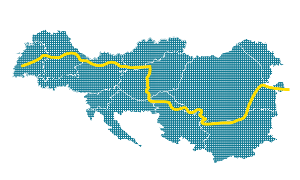Optimal Use of Resources – New Circular Business Models
We use resources every second in our lives – the clothes we wear, the apartment or house we live in, the energy we use, the food we eat, the technical devices we employ. The more things we gather around us, the more we tend to forget about their origin and production. Besides the actual processed material, many by products and other goods are used, such as water, air or soil. Therewith, the use of resources implies not only the extraction of materials from the environment, but also pollution, land use, land degradation and emissions across the entire value chain of a product [1]. These negative impacts on the environment further persist if products traditionally go to landfills or waste incineration plants. Since these operations are no longer desirable with regards to the environmental impacts, new business models for sustainable and circular products along the entire value chain are needed, a so called transition from the linear to a circular economy.
Innovative circular business models envisage products that are leased, shared, repaired, remanufactured and recycled, thus entering a circular value chain rather than a linear one. Hence, the products are kept as long as possible within the economy, whereby waste is reduced and resources are saved [2]. Such new business models enable the control and tracking, creates new services for the capturing of values and enhances networks and cooperation between the stakeholders [3].

Through our MOVECO project [4], four different circular business models could be identified:
1. Product Life Extension: the lifetime of a product can be immensely prolonged if products are repaired, reused, refurbished and thus stay within the circular value chain. However, costumers’ preferences and policy formalities influence the design. Only if none of these actions is feasible for the product anymore, recycling operations are performed.
2. Resource Recovery: within this business model, resources are recovered or reused through technological innovations according to the cradle-to-cradle design and closed loop recycling. Thus, waste is minimized and the need for new materials reduced. A commonly known example for such a business model is the recovery of aluminium, paper, PET bottles or glass. Not only resources, but also energy, nutrients and gasses can be recovered from the production process.
3. Product as a Service: customers do not own the product, but lease it or pay for its use. The customer subscribes to a service and pays a usage fee or sign a leasing contract. Since the product stays the property of the producers, they are interested in prolonging the lifespan of the product and therefore receive recurring value.
4. Circular Supplies: companies replace scarce commodities by fully renewable, recyclable or biodegradable resource inputs. Therewith, the supply chain of materials becomes predictable and sustainable with lower costs. This striving for renewable resources encourages the development of new products and materials.
5. Sharing Platforms: products are shared on a low use rate. Hence, the time of product or service utilization can be optimized as for example a car is unused most of the time if owned and used by one person only.
For all circular business models, innovative and longterm thinking is required [5] to foresee processes and impacts throughout the entire value chain. However, even if most value chains are not completely circular yet, even smaller steps towards the circularity goal lead to resource saving and thus to lower impacts on the environment. If you would like to see some circular business models, visit our best practise section on the MOVECO-Website (http://www.interreg-danube.eu/approved-projects/moveco).
[1] Umweltbundesamt (2014): Resource use and its consequences (https://www.umweltbundesamt.de/en/topics/waste-resources/resource-use-it... )
[2] MOVECO: Fact Sheet - Information on Circular Economy (http://www.interreg-danube.eu/uploads/media/approved_project_output/0001... )
[3], [5] Ellen McArthur Foundation: Circular Business Models for the Built Environment (https://www.ellenmacarthurfoundation.org/assets/downloads/ce100/CE100-Co... )
[4] MOVECO: Business Models for the circular Economy (http://www.interreg-danube.eu/approved-projects/moveco/section/circular-... )
(Credits titel picture: Sylvie Tittel; Unsplash)

